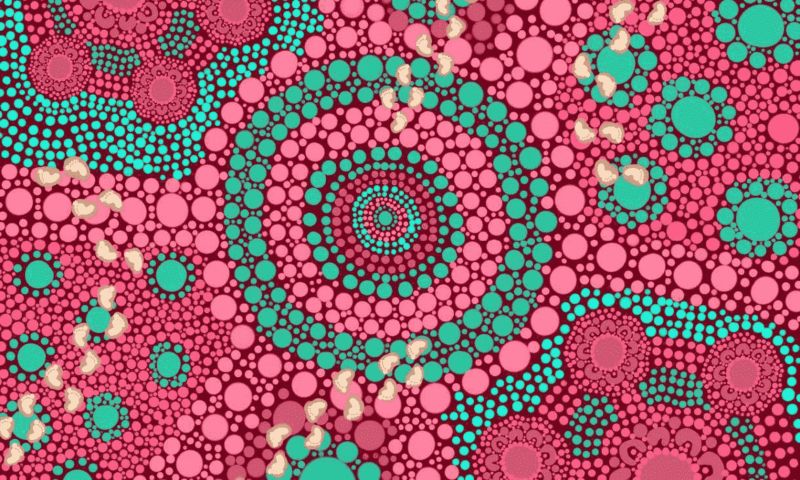A design by an RMIT alumnus is to be exhibited at the home of RMIT Europe, bringing Indigenous art and perspectives to Barcelona's innovation district.
Staff and visitors to RMIT's European hub will soon be greeted by a special piece of artwork - a touch of Indigenous creativity in the heart of the Catalan capital.
The contemporary design created by Cortney Glass, a Dagamon, Wardman and Gurindji woman, is the chosen entry from a competition run by RMIT Europe and the Ngarara Willim Centre.
The contest invited current RMIT students, staff and alumni who are Aboriginal and/or Torres Strait Islander to submit a design celebrating messages of diversity, community, and inclusiveness.
Glass' inspiring artwork - which will be professionally printed and displayed at the office of RMIT Europe - promotes Aboriginal culture and values at a global level, and positively contributes to the University's efforts towards reconciliation.
The story behind the artwork
Glass hails from the small town of Katherine in the Northern Territory and is a graduate of the Bachelor of Design (Communications).
The emerging contemporary digital artist uses her passion for creativity and design to share stories about her family and Aboriginal heritage using bright colours like green, pink and blue.
"I like to experiment with colour through my work to showcase my creativity and passion for graphic design," Glass said.

Glass' design in the competition is inspired by the importance of connection, collaboration and engagement.
"There are two central meeting places shown on the left and right sides of the print, which are symbolic of RMIT University's presence in both Europe and Australia," she said.
"They depict a meeting hub for learners to collaborate, connect, learn and share stories of their culture. The footprints reflect the journey taken by students to learn, upskill and gain qualifications to start their careers.
"They also represent students who travel and take part in learning and connecting with each other's culture."
How the competition worked
The design brief was imagined by the RMIT Europe team who produced the key ideas that they believe to be important and resonate across cultures.
Applicants could submit up to three different designs alongside a 300-word description, with the winner awarded AUD $1,000 and the opportunity to have their design exhibited in Barcelona and applied to RMIT marketing collateral.
"We were pleased to receive a selection of entries reflecting Indigenous traditions of people and groups coming together to connect, learn and collaborate," said Marta Fernández, Executive Director of RMIT Europe and member of the judging panel.
"These ideals are also true and representative of our multicultural team here at RMIT Europe, where we focus on growing collaborative research with partners and promoting international student experiences and cultural exchanges."
"We're excited to have this opportunity to exhibit the chosen design here in Barcelona and showcase Indigenous art in a European context."
Fernández was joined on the competition judging panel by Inés Crosas, Reconciliation Champion and Partnerships and Communications Advisor at RMIT Europe, Annie Sevil, a Gomeroi woman born in Narrabri and Coordinator, Communications and Events at the Ngarara Willim Centre, and Talia Elliott, a Bundjalung and Yugambeh woman from Southern Queensland and Senior Advisor, Indigenous Access and Engagement at the Ngarara Willim Centre.






